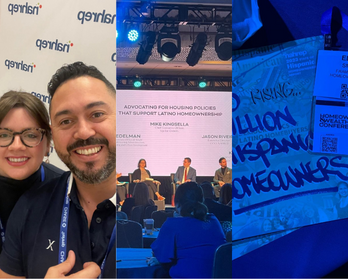Refinancing can lower your monthly payment, save money over the life of your mortgage, and help you own your home free and clear sooner.
Even if you’re a new homeowner, it’s smart to get a handle on the basics so you’re ready when the time comes.
But there’s more to refinancing than getting a lower interest rate. Below are seven things to consider, depending on your situation, and what they might mean for you.
1. A lower interest rate
If you have some free time, take a good look at an online amortization calculator. It’s an eye-opening exercise. Watch as a lower interest rate drops your monthly payment and saves tens of thousands of dollars in interest over the life of the loan.
For example, on a 30-year, $200,000 loan, a single percentage point can save $40,000 in interest over the 30 years:
$200,000 @ 4.5% =
$1,013 monthly payment
$164,813 total interest paid over 30 years
$200,000 @ 3.5% =
$898 monthly payment
$123,312 total interest paid over 30 years
Interest saved: $40,000+ over 30 years
Pretty compelling!
Heads-up: The number-one refi mistake is refinancing at an interest rate that’s not low enough to make up for the closing costs.
Heads-up: The No. 1 refi mistake is refinancing at a rate that’s not low enough to make up for the closing costs.
2. No more MIP
Is your first mortgage an FHA-backed loan? Then you know that one of the trade-offs was mortgage insurance premium (MIP), which is usually required for the life of the loan.
The only way to get rid of that monthly burden is to refinance into a conventional mortgage, which can definitely be worth doing.
3. A shorter term
By refinancing to a shorter-term mortgage (like from a 30-year to a 20- or 15-year), you’ll build equity faster and pay off your mortgage sooner. You’ll also save a bunch of money on interest as lenders tend to offer lower rates for shorter-term mortgages.
First, let’s look at just a shorter-term on a $200,000 loan:
30-year term @ 4.5% =
$1,013 monthly payment
$164,813 total interest paid over 30 years
15-year term @ 4.5% =
$1,530 monthly payment
$75,398 total interest paid over 15 years
Interest saved: $89,000+ over 15 years
Now a shorter term plus a lower rate:
30-year term @ 4.5% =
$1,013 monthly payment
$164,813 total interest paid over 30 years
15-year term @ 3% =
$1,381 monthly payment
$48,609 total interest paid over 15 years
Interest saved: $116,000+ over 15 years
You can see how just a shorter term will save you a huge amount on interest, but at the cost of a higher monthly payment. Combine a shorter term and a lower interest rate, and you save even more, and with a more manageable payment.
4. Refi to prepay
The problem with a shorter term is higher monthly payments. You have less flexibility if money gets tight.
Alternative: Taking a lower rate, but not a shorter term. Then, instead of pocketing the monthly savings, you keep making the same mortgage payment by putting exextra money toward your principal (ask your mortgage company about the best way to do that).
You won’t get the extra-low interest rate that’s typically offered for a shorter-term mortgage, but you’ll still pay much less interest and get ahead faster — without being bound to a bigger monthly payment.
Take the example from No. 1 above: Refinancing from 4.5% interest to 3.5% on a $200,000 loan. The lower interest rate drops your monthly payment from $1,013 to $898, a savings of $115 per month. If you put that $115 toward principal every month, you’ll pay off your mortgage more than five years early.
5. A fixed rate
If you went with an adjustable-rate mortgage when you bought your house, you’ll probably want to refinance and lock in a fixed rate a few months before your rate is set to go up.
6. Cash out some equity
A “cash-out ” refi is a way to extract all or part of any equity you’ve built up. The new loan is enough to pay off your old mortgage, plus any closing costs, and leave you with some cash.
However, just as with a home equity loan, it’s good to explore other options first.
Do you really want to wipe out your equity? Is whatever you want that cash for worth the risk of using your home as collateral?
Plus, cashing out could increase your loan-to-value ratio and force you to buy mortgage insurance, or pay more for it.
7. Add cash to boost equity
You can also add to your equity when you refinance. In other words, make a big payment on principal. It’s another way to lower your monthly payments (maybe enough to do a shorter term or to prepay) and save on interest.
Some lenders offer a cash-in alternative that lets you lower your monthly payment without the hassle or expense of refinancing. It’s called “recasting ” or “re-amortizing” (FHA and VA loans aren’t eligible).
While you still put a chunk of money toward principal (minimums vary), your interest rate and loan term stay the same. The fee for doing this is far less than for a refi, as little as $250. Lenders rarely advertise recasting, so you’ll have to ask about it.
TIP: Make a habit of checking rates
How will you stay aware of mortgage interest rates, so you can act when the time is right? A few ideas:
- Check the rates when you pay your mortgage every month
- Add it to your monthly maintenance checklist
- Set a monthly reminder in your phone




